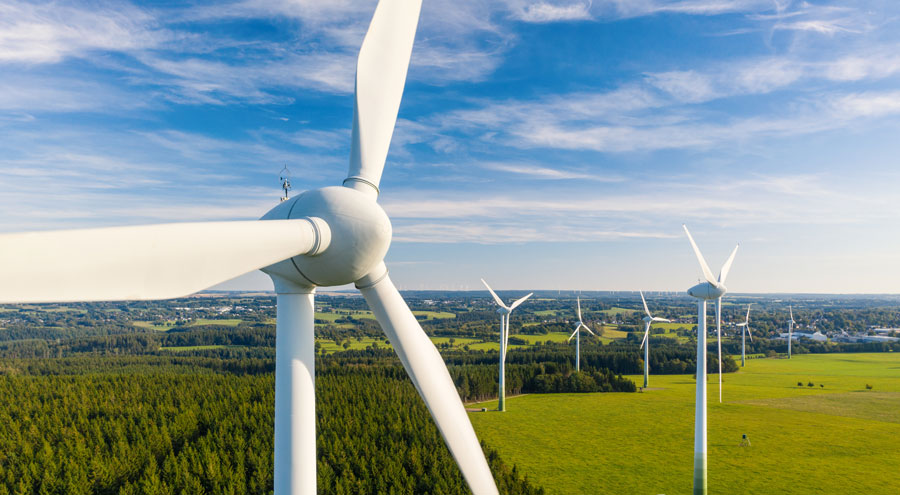
A wind power converter is a power conversion device specifically designed to convert the direct current generated by a wind turbine (usually a wind turbine) into alternating current. The converter is an indispensable energy conversion unit of the wind turbine, and is the control center of the whole electrical system, which directly affects the electrical parameters and functions such as power generation efficiency, low voltage ride-through, and interacts with the main controller of the wind turbine in real time with a variety of data.
The wind in nature is unstable, the speed is sometimes big and sometimes small, this instability determines that the rotational speed of the wind turbine is changing, so that the electricity issued is also unstable, while the grid needs 50Hz constant frequency alternating current. In order to solve this problem, certain frequency change means are needed to match the speed change, to realize the frequency of the wind power frequency and convert it to the grid AC frequency, which needs to utilize the frequency converter technology in the power electronics technology. This power needs to be converted by a suitable converter to make it suitable for connection to the grid or for supply to domestic and industrial equipment.
Types of converters
PWM converter (Pulse Width Modulation Inverter): PWM converter is a common type of wind power converter, which regulates the output voltage and frequency by controlling the switching state and pulse width of the switching devices (e.g., IGBTs), thus converting the DC power to AC power.The PWM converter has a high efficiency and precise output control, and therefore is widely used in the wind power system. The PWM converter has high efficiency and precise output control, so it is widely used in wind power generation systems.
Multilevel Inverter: Multilevel converters use multiple output voltage levels to achieve a more sinusoidal output voltage by combining the states of multiple switching devices, thus reducing harmonic content and improving output voltage quality. Multilevel converters are typically used in large wind power systems to improve system efficiency and stability.
Direct Drive Converter: A direct drive converter connects the DC power generated by the wind turbine directly to the grid without the use of a transmission, thus simplifying the system architecture and improving efficiency. This type of converter is usually used in combination with permanent magnet synchronous generators (PMG) and is suitable for smaller wind power systems.
Doubly Fed Induction Generator (DFIG): The DFIG utilizes a variable frequency inverter connected to the rotor windings of the wind turbine generator and another inverter connected to the stator windings. This configuration allows the generator to rotate out of synchronization with the wind speed, which improves the efficiency and stability of the system and is widely used in medium to large wind power systems.
Other Types: There are other types of wind power converters, such as Voltage Source Inverter (VSI), Current Source Inverter (CSI), etc., which may be used in specific application scenarios.
The composition of the converter
Wind power converters are customized and require many types of raw materials and complex specifications. Generally speaking, the converter consists of control circuit boards (PCBA), power modules, circuit breakers, contactors, filters, reactors, transformers and cabinets.
Among them, the control circuit board is the brain of the whole wind power converter, which is responsible for monitoring the operation of the wind power system and adjusting the working status of the rectifier and inverter as needed to ensure the efficient operation of the wind generator and meet the requirements of the grid connection. The control system usually consists of a microprocessor and corresponding software, which determines the level of adaptability of the product to the power generation system and the grid, and directly affects the performance, stability and maintenance and debugging efficiency of the product.
Power modules, as an important part of product functionality and cost, the level of optimization in their design is one of the key factors affecting the stability, durability and cost of the product.
An inverter converts DC power to AC power and outputs it to the power grid. The inverter is usually controlled by power semiconductor devices such as thyristors (IGBTs) to control the output AC voltage and frequency to match the grid requirements.
These components work in concert with each other to convert the power generated by the wind turbine into power available to the grid. At the same time, the wind power converter may include additional features such as current overload protection, short circuit protection, and overvoltage protection to ensure safe and stable operation of the system.
